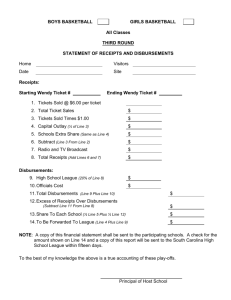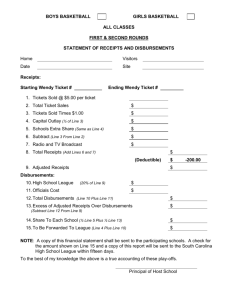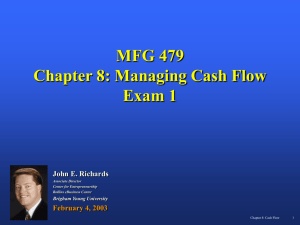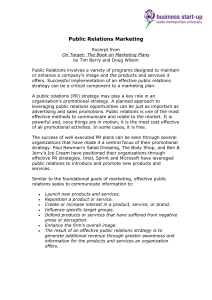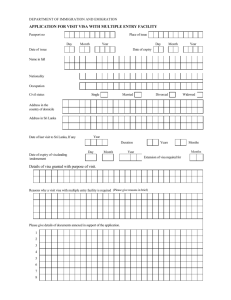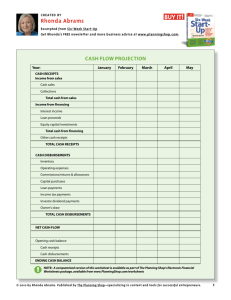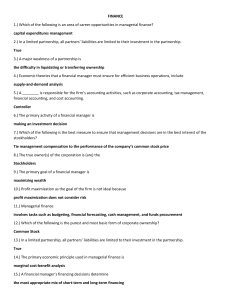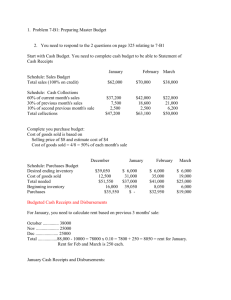VISA Develop a Business Plan SOURCE: http://www.va
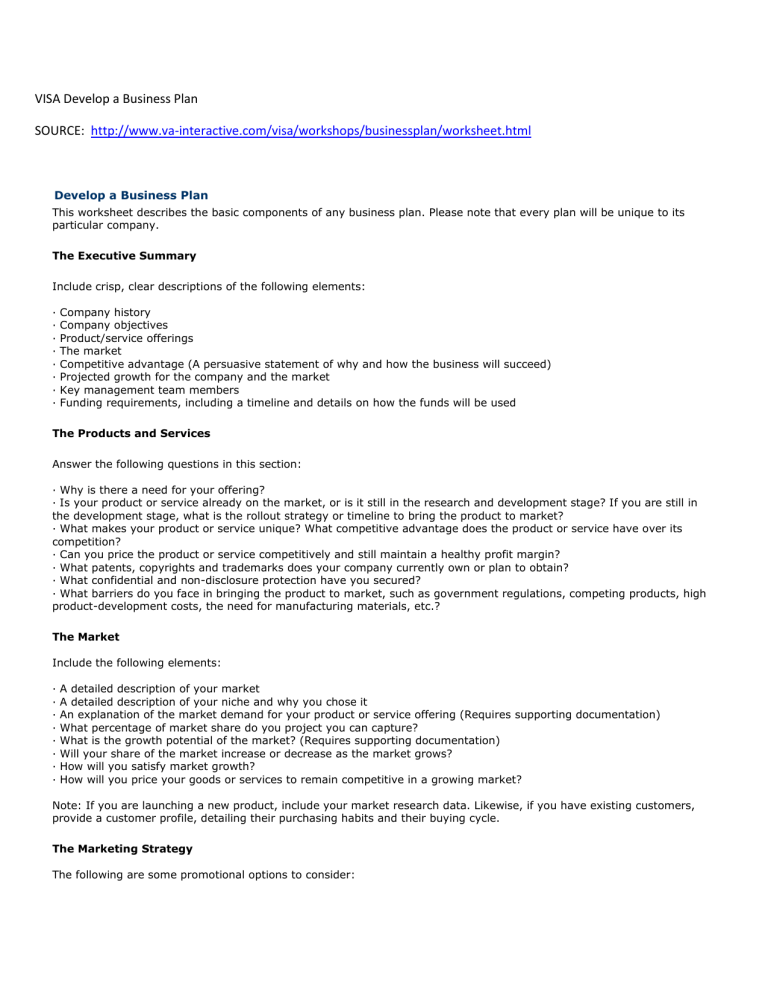
VISA Develop a Business Plan
SOURCE: http://www.va-interactive.com/visa/workshops/businessplan/worksheet.html
Develop a Business Plan
This worksheet describes the basic components of any business plan. Please note that every plan will be unique to its particular company.
The Executive Summary
Include crisp, clear descriptions of the following elements:
· Company history
· Company objectives
· Product/service offerings
· The market
· Competitive advantage (A persuasive statement of why and how the business will succeed)
· Projected growth for the company and the market
· Key management team members
· Funding requirements, including a timeline and details on how the funds will be used
The Products and Services
Answer the following questions in this section:
· Why is there a need for your offering?
· Is your product or service already on the market, or is it still in the research and development stage? If you are still in the development stage, what is the rollout strategy or timeline to bring the product to market?
· What makes your product or service unique? What competitive advantage does the product or service have over its competition?
· Can you price the product or service competitively and still maintain a healthy profit margin?
· What patents, copyrights and trademarks does your company currently own or plan to obtain?
· What confidential and non-disclosure protection have you secured?
· What barriers do you face in bringing the product to market, such as government regulations, competing products, high product-development costs, the need for manufacturing materials, etc.?
The Market
Include the following elements:
· A detailed description of your market
· A detailed description of your niche and why you chose it
· An explanation of the market demand for your product or service offering (Requires supporting documentation)
· What percentage of market share do you project you can capture?
· What is the growth potential of the market? (Requires supporting documentation)
· Will your share of the market increase or decrease as the market grows?
· How will you satisfy market growth?
· How will you price your goods or services to remain competitive in a growing market?
Note: If you are launching a new product, include your market research data. Likewise, if you have existing customers, provide a customer profile, detailing their purchasing habits and their buying cycle.
The Marketing Strategy
The following are some promotional options to consider:
· TV
· Radio
· Web
· Direct mail
· Trade shows
· Public relations
· Promotional materials
· Telephone sales
· One-on-one sales
· Strategic alliances
If you have current samples of marketing materials or strategies that have proven successful for you, include them with your plan.
Discuss your distribution strategy:
· Will you mail order, personally deliver, hire sales reps, contract with distributors or resellers, or use some other method?
· What are the costs associated with your proposed delivery methods?
· How will you track the effectiveness of the methods you choose?
The Competition
Specific areas to address in this section are:
· Who are your closest competitors and what are their product/service offerings?
· Where are they located?
· What are their revenues?
· How long have they been in business?
· Who is their target market?
· What percentage of market share do they currently hold?
· Do they service a local, geographic market or a national customer base? Is that the same or different from your approach?
· In what other ways do your operations differ from each of them? How are they similar?
· What do your rivals do well? Where is there room for improvement?
· In what ways is your business superior to the competition?
· How is their business doing? Is it growing, declining or stable?
· Are there certain areas of the business where the competition surpasses you (management team, economies of scale, better distribution, volume discounts, etc.)? If so, what are those areas, and how do you plan on compensating for them?
Operations
This section of the plan should describe the following requirements of your business:
· Manufacturing
· R&D
· Purchasing
· Staffing
· Equipment
· Facilities
Note: Provide a rollout strategy as to when these requirements need to be purchased and implemented. In addition, describe the vendors you will need to build the business. Do you have current relationships, or do you need to establish new ones? Who will you choose and why?
The Management Team
When preparing this section of the business plan, you should address the following five areas:
1. Personal history of the principals
· Business background of the principals
· Past experience -- tracking successes, responsibilities and capabilities
· Educational background (formal and informal)
· Personal data: age, current address, past addresses, interests, education, special abilities, reasons for entering into business
· Personal financial statements with supporting documentation
2. Work experience
· Direct operational and managerial experience in related businesses
· Indirect managerial experiences
3. Duties and responsibilities
· Who will do what and why? Who is responsible for final decisions?
· Organizational chart with chain of command and listing of duties
4. Salaries and benefits
· A simple statement of what management members will be paid, by position
· Listing of bonuses in realistic terms
· Benefits (medical, life insurance, disability, etc.)
5. Resources available to your business. They might include:
· Insurance brokers
· Lawyers
· Accountants
· Bankers
· Consulting groups
· Small Business Association
· Local business information centers
· Chambers of Commerce
· Local colleges and universities
· Federal, state and local agencies
· Board of Directors
· World Wide Web (various search engines)
Personnel
Consider the following questions in completing this section of the business plan:
· What are your current personnel needs (full- and/or part-time)? How many employees do you envision in the near future, and then in the next three to five years?
· What skills must your employees have?
· What will their job descriptions be?
· Are the people you need readily available? If not, how will you attract them?
· Will you pay salaries or hourly wages?
· Will you provide benefits? If so, what will they be, and at what cost?
· Will you pay overtime?
Financial Data
Have a certified public accountant establish your accounting system before the start of business to provide you with data in the following four areas:
· Balance Sheet -
Indicates what the cash position of the business is and what the owner's equity is at any given point (the balance sheet will show assets, liabilities and retained earnings).
· Break-Even Analysis -
Shows the volume of revenue from sales that are needed to balance the fixed and variable expenses. Without exception, all businesses should perform this analysis, which is based on the income statement and cash flow.
· Income Statement
(also called the profit and loss statement) - Indicates how well the company is managing its cash, by subtracting disbursements from receipts.
· Cash Flow -
Projects all cash receipts and disbursements. Healthy cash flow is critical to the survival of any business.
Supporting Documentation
You will need to include all documents that lend support to statements made in the body of your company's business plan.
Please be aware that this list is not complete and may vary depending on the stage of development of your business.
· Resumes
· Credit information (include in appendix)
· Quotes or estimates
· Letters of intent from prospective customers
· Letters of support from credible personal references
· Leases or buy/sell agreements
· Legal documents relevant to the business
· Census/demographic data
